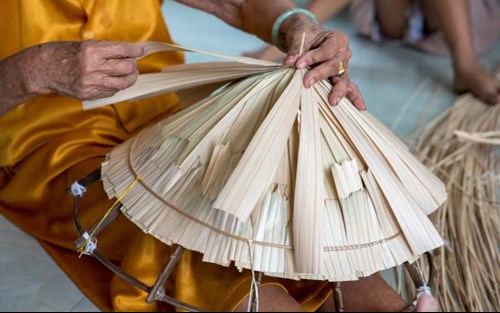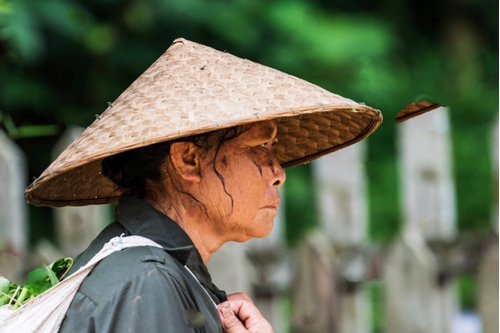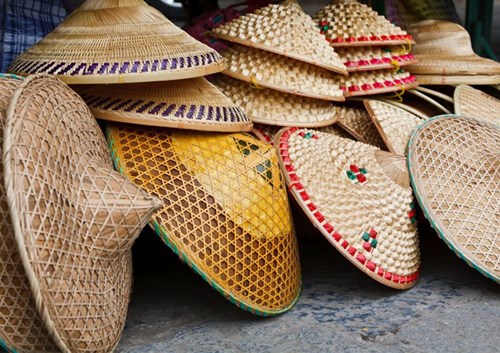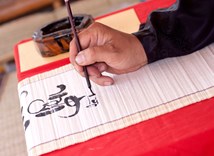With its natural landscapes, mountainous regions, earthy villages, and colonial architecture, Laos offers an abundance of cultural experiences. But for a deeper immersion in its traditions, we suggest you discover its traditional conical hat, which ideally reflects the country’s deeply rooted cultural heritage.

As in its neighboring countries, the conical hat of Laos (flatter than its Vietnamese counterpart) is primarily used to protect oneself from the rain and the sun. Also called Koup in Lao, these hats are not only a symbol of agriculture, but also illustrate the culture and history of the country.
Design

Laotian conical hats are derived from natural materials suitable for hot and wet conditions. The most popular materials are palm or bamboo leaves. With the structure made from bamboo, people then wove the dried leaves, finishing the hat by tying it with a cotton or silk ribbon.
Occasionally, women from ethnic tribes still sew embroidered patterns or symbols, creating delicate designs woven between the layers of leaves. Most of the motifs appearing in traditional embroidery are inspired by nature and associated with animals.
Function

The purpose of the conical hat is to protect the wearer from the weather. Their design allows rainwater to run off and shields it from the sun's harsh rays. Although typically worn by agricultural workers, this accessory is now vastly popular and worn by many men, women, and children throughout the country.
Typically, people working in the rice fields and those selling products on the market stalls wear these hats. Laotian women also use these hats as baskets, carrying fruit or other dry goods.
Modern-Day Use

Conical hats have kept their original use throughout generations. As for the production of these hats, they have also become a tradition in various traditional villages of the nation, making distinctive designs that reflect their own customs.
During a stay in Laos, travelers will not be able to miss these conical hats that have become one of the most prized souvenirs, found in any market or tourist gift shop. Today, these hats not only express the beauty of its culture but also honors the customs and spirits of the people.








